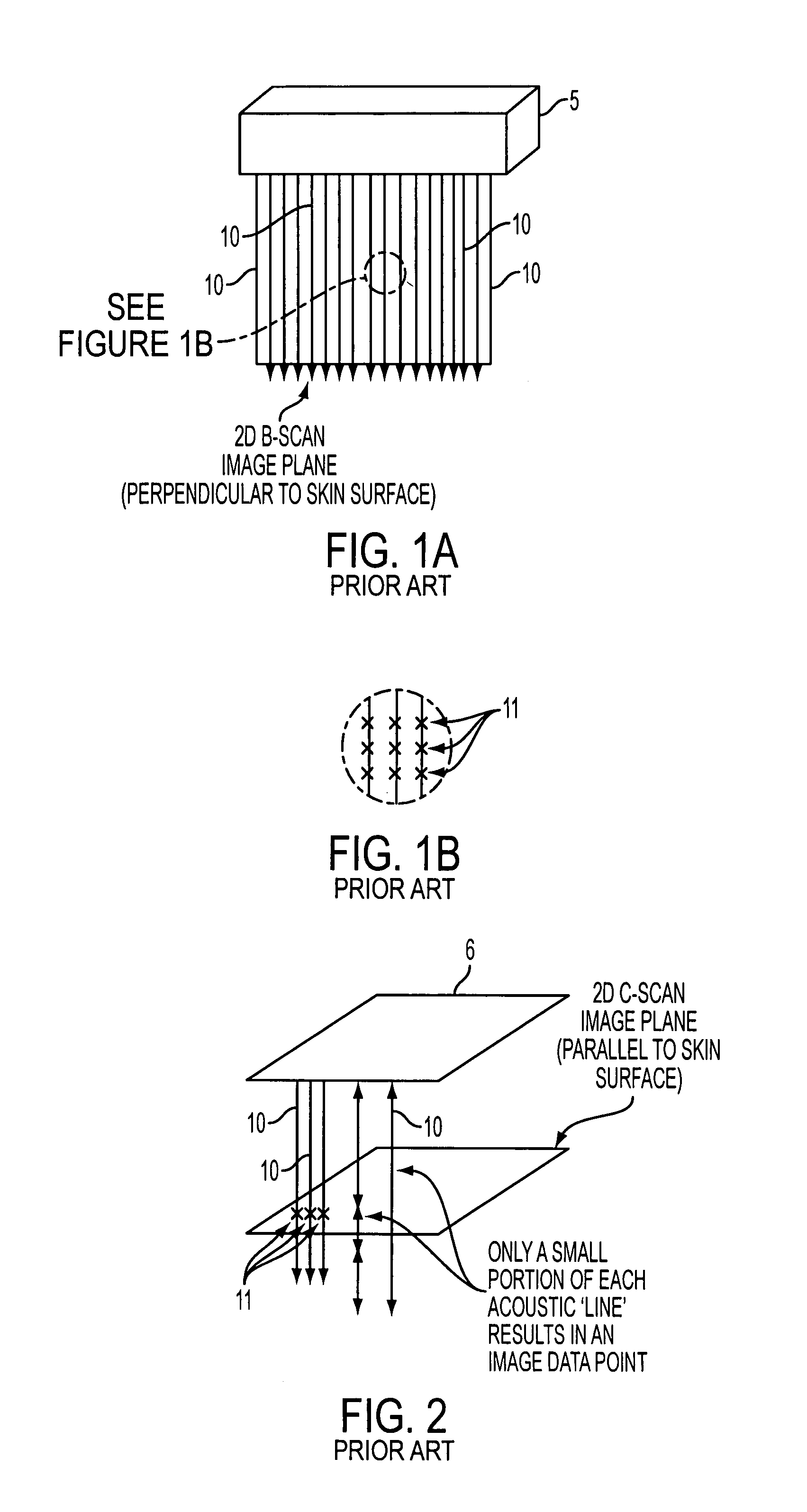Efficient ultrasound system for two-dimensional C-scan imaging and related method thereof
a two-dimensional c-scan and ultrasound system technology, applied in tomography, instruments, applications, etc., can solve the problems of unnecessary treatment delay, increased difficulty in detection, and complicated needle insertion, so as to achieve no cost in image acquisition rate, low cost, and low frame rate
- Summary
- Abstract
- Description
- Claims
- Application Information
AI Technical Summary
Benefits of technology
Problems solved by technology
Method used
Image
Examples
Embodiment Construction
[0030]FIG. 3 illustrates a conventional beamforming system. A transmit generator 30 applies transmit voltage energy signals to an array of transducers 32 having multiple elements 31. The elements 31 of the transducer each receive the transmit electrical signals and generate respective ultrasonic pressure (acoustic) signals. Conventional beamforming operations are applied for each firing of signals. The timing of the firings may be configured to produce one tightly focused beam, multiple transmit beams or may essentially unfocused depending on the beamforming approach being used. For example, a flat, plane wave is used in transmit in the system and method provided in International Application No. PCT / US03 / 06607, filed Mar. 6, 2003, entitled “An Intuitive Ultrasonic Imaging System and Related Method Thereof,” of which is assigned to the present assignee and is hereby incorporated by reference herein in its entirety. Conventional beamforming also involves the procedure of apodization f...
PUM
 Login to View More
Login to View More Abstract
Description
Claims
Application Information
 Login to View More
Login to View More - R&D
- Intellectual Property
- Life Sciences
- Materials
- Tech Scout
- Unparalleled Data Quality
- Higher Quality Content
- 60% Fewer Hallucinations
Browse by: Latest US Patents, China's latest patents, Technical Efficacy Thesaurus, Application Domain, Technology Topic, Popular Technical Reports.
© 2025 PatSnap. All rights reserved.Legal|Privacy policy|Modern Slavery Act Transparency Statement|Sitemap|About US| Contact US: help@patsnap.com



